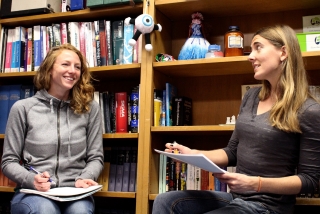October 2nd is Stem Cell Awareness Day, which brings together organizations and individuals around the world in support of stem cell research, with the aim of increasing awareness and education. UC Santa Barbara stem cell researchers are presenting educational outreach seminars at Santa Barbara High School, San Marcos High School, Cate School, and Santa Barbara City College. In addition, tours of the Laboratory for Stem Cell Research and Engineering, our CIRM-funded core facility, are offered to local community groups to provide a glimpse of the exciting ongoing research on human pluripotent stem cells. For more information, see http://www.cirm.ca.gov/stemcellday
Contact
- Voice: (805) 893-5320
Address
Neuroscience Research Institute
University of California, Santa Barbara
Santa Barbara, CA 93106-9610





